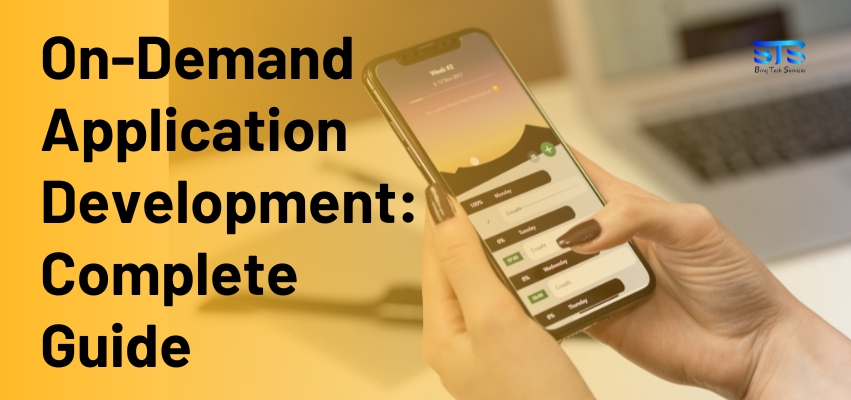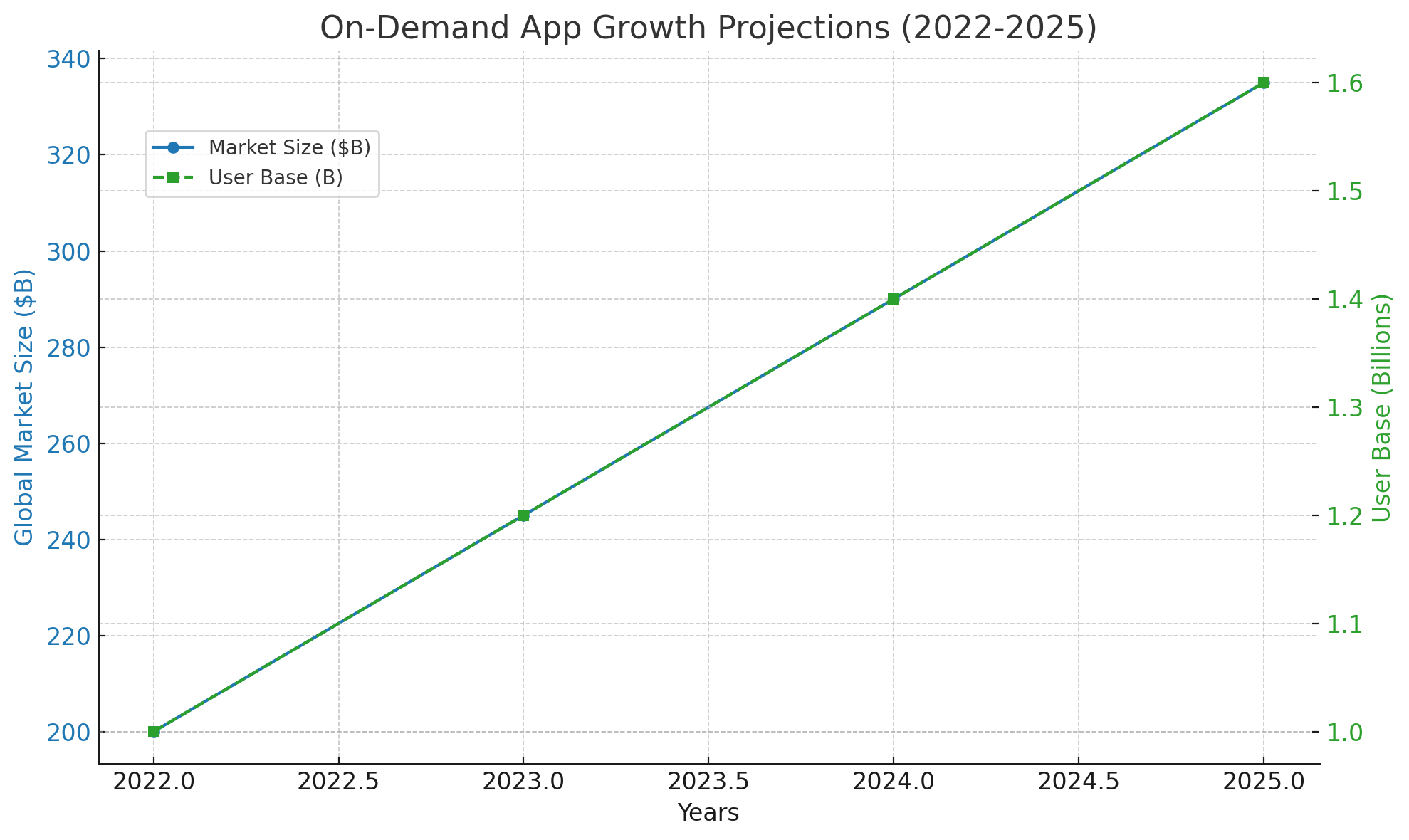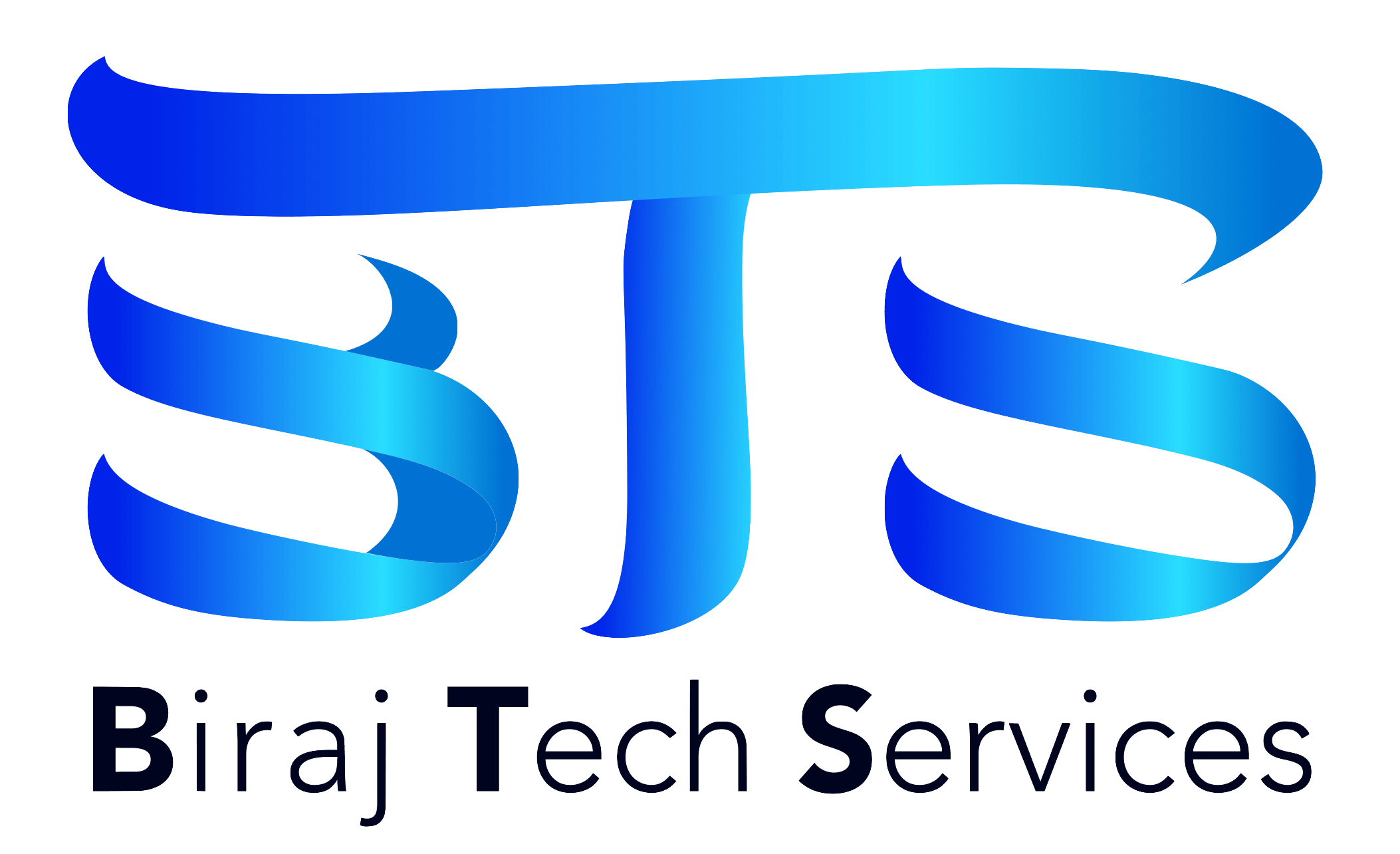
On-Demand App Development: Complete Guide
The on-demand app market is set to reach $335 billion by 2025, driven by innovations like AI, 5G, and growing consumer demand. This makes it a prime opportunity for businesses to innovate, scale, and meet evolving customer needs.
On-demand delivery or service applications have become one of the most popular business ideas in recent years. Consumers currently have a strong need for quick delivery of services and goods, which is made feasible by this technology.
The on-demand economic trend is expected to rejuvenate the supply chain and increase customer satisfaction. To produce applications that serve this function, several software businesses are focusing on on-demand app development.
Top Industries Driving Growth
- Food Delivery Apps: Expected to reach $320 billion globally by 2029 (Grand View Research).
- Healthcare On-Demand Services: Telemedicine app usage grew 300% post-pandemic and is expected to continue at a CAGR of 20% (McKinsey).
- Ride-Hailing Apps: The global ride-hailing market is projected to hit $270 billion by 2025.
Food delivery, courier, field service, healthcare, and miscellaneous items delivery are among the industries that make the most use of on-demand services and apps (e.g., gifts, flowers). If you want to create an on-demand app for your company, you must keep certain details in mind. This will be covered in greater depth in this post.
Why Should Brands Choose On-Demand App Development?
There are numerous possible benefits available to businesses after implementing an on-demand business model.
According to statistics, the on-demand economy has a large consumer base, with 22.4 million users in the United States per year. These services cost them around $57.6 billion. From a company standpoint, this provides for increased consumer reach, revenue growth, and operational efficiency.
If you're asking why you should still invest in this strategy, consider the following benefits for your company.
Tracking in real time
Such apps contain a real-time tracking capability for tracking the development of the service. This functionality is extremely useful in the context of a company's transportation and logistical functions. Not only can officials keep track of their live shipment, delivery agent location, and ETA, but customers can also follow these facts in real-time.
Data Management and Storage
Cloud infrastructure support boosts the storage and accessibility capacity of these apps for organisations. This region contains critical information such as service data, service provider data, and even user data.
Data analysts can subsequently use the cloud storage to learn about client interest trends and make changes to the app.
Practical business strategy
It is worth noting that on-demand apps serve as a link between two ends of a supply chain, namely, customers and manufacturers. Such apps simplify the distribution procedure and streamline the supply chain.
Businesses may thus handle consumer demands more quickly, manage their duties more effectively, and see an increase in their profit margins.
Improved time management
On-demand technology significantly shortens service durations.
According to statistics, 51% of service providers began offering same-day delivery service in 2018, increasing to 65% by 2019. The total reduction in service span occurs due to various factors, including low physical encounters, quick shipment, and a shorter turnaround time.
Lower initial investment
When compared to traditional app construction methods, on-demand app development reduces overall project costs. Costs such as overhead rent, hiring a professional team/developers and their pay, operational prices, and hardware costs can all be reduced here. Furthermore, maintenance requirements are reduced.
Options for personalization
You can successfully personalize the app model for your various applications. Businesses can redefine their service and product models with on-demand development. They monitor market customer trends and respond accordingly.
Customer fulfillment
The main reason that businesses invest in on-demand apps is because of how their client bases react to them. Most users nowadays expect services or commodities as soon as feasible. According to statistics, 6% of all participants in one poll claimed that they shopped for online grocery more than once in a single month.
As a result, firms with more on-demand apps may ensure greater client happiness.
Why Invest in On-Demand App Development?
The on-demand economy is not just a trend but a business imperative for startups and enterprises.
- Businesses leveraging on-demand solutions report a 65% increase in customer satisfaction.
- The gig economy, powered by on-demand platforms, is expected to contribute $455 billion to the global economy by 2025 (PwC).
Some popular examples of on-demand applications include:
Ride-Sharing Apps:
Uber and Lyft for booking rides instantly.
Food Delivery Apps:
DoorDash, Zomato, Swiggy, and Uber Eats for ordering food on demand.
Grocery Delivery Apps:
Instacart, BigBasket, and Amazon Fresh for same-day grocery deliveries.
Streaming Services:
Netflix, Disney+, and Spotify for on-demand entertainment (videos and music).
Healthcare On-Demand Apps:
Teladoc Health and Practo for virtual doctor consultations.
Home Services Apps:
TaskRabbit, UrbanClap (Urban Company), and Handy for home repairs, cleaning, and maintenance.
Freelancing Platforms:
Fiverr and Upwork for hiring freelancers on demand.
Logistics and Delivery Apps:
Dunzo and Postmates for on-demand courier and delivery services.
Fitness Apps:
Peloton and FitOn for on-demand workouts and training sessions.
There are certain procedures involved in the development of on-demand apps. This is the general procedure you should use for this task.
Phase of conceptualization/planning
The first step is for business people to develop an app concept. It is critical at this stage to perform extensive research on market trends and consumers. Discover what they are interested in and expand on that for your app idea.
Consider similar types of apps that are accessible in your niche market. Examine how competitors' apps performed with their clients. Consider which elements they liked and which they disliked.
Investigate which types of apps are most popular in the market. Then, consider what distinguishes them. With the information acquired, you may lay the groundwork for your app.
Business plan
Following the completion of the planning phase, the development team would begin selecting their business model. Setting the target audience is critical in order to determine whether the app should have a B2B, C2C, or B2C service model.
Determine whether you are developing an on-demand app for suppliers, customers, or manufacturers. Consider whether you want to design the app for native iOS, native Android, or a hybrid platform.
Choose a technology
To choose the technological stack to implement, first assess the platform for which you are developing the app. At this point, seek the assistance of certified developers.
Hire people that are knowledgeable and experienced in various frameworks like as React Native and Swift, as well as languages such as JavaScript or C##. Also, stick to a pre-planned list of the functions, features, and constraints you require.
Design and creation
On-demand apps might benefit from unique structures and designs created by professional app designers. Check to see if the professionals you're considering hiring have the appropriate expertise for this operation.
Deployment and testing
It should be noted that testing is a crucial phase that should be prioritized throughout the app development process. However, at the end of the development phase, you should perform specialized testing, such as beta tests.
Examine the app thoroughly for performance capabilities. According to statistics, app users discover 44% of in-app flaws. To avoid this, undertake extensive QA testing initially. After that, launch the app and provide extra maintenance assistance later.

Important features to have in on-demand apps
There are certain aspects that must be included in order to design a successful on-demand app. However, the primary features of on-demand apps differ for each user base, i.e., customers and providers.
The following is a list of key characteristics found in such apps.
- Push notifications- This allows consumers to receive delivery status updates and vital notifications straight on their smartphones.
- Real-time tracking allows customers to trace the path of their order and confirm its arrival status in real time.
- Payment- On-demand app services accept a variety of payment methods, including credit/debit cards, UPI alternatives, and COD. These choices are simple to use, quick to complete, and provide safe encrypted transactions.
Customers can save their favorite products or service providers as favorites. They can return to their favorites list later to easily find and re-order items. - Ratings/reviews- In the reviews section, users can comment on their experience with the app or products. This feedback can be used by businesses to improve their app and services.
- Customer service- The Customer Care function allows app users to communicate directly with the company's support personnel. The latter can answer their questions fast.
- Request acceptance/rejection - This functionality allows service providers to accept or reject orders at any moment.
- Customer data management - The service provider has an area on the app where they can manage all of their customer interactions. Discounts, payments, and cancellation fees are examples of these.
Conclusion
All things considered, you should look at the various successful on-demand apps that are available online. Consider which versions have a larger customer base and what makes them unique. Building on-demand apps can be beneficial for companies with the correct quantity of data and the assistance of a competent development team. Contact the best software and app development BirajTech Team to get started with your On-demand app now!
If you're planning to capitalize on this booming market, now is the time to invest in innovative, user-centric on-demand app solutions.
